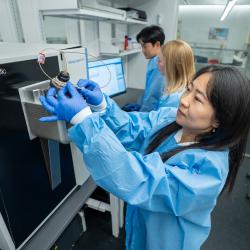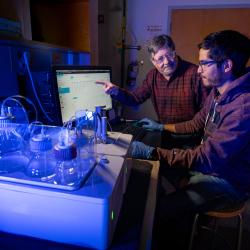A New Way to Measure Energy in Microscopic Machines
NIST technique enables analysis of how living systems work at small scales.
What drives cells to live and engines to move? It all comes down to a quantity that scientists call “free energy,” essentially the energy that can be extracted from any system to perform useful work. Without this available energy, a living organism would eventually die and a machine would lie idle.
In work at the National Institute of Standards and Technology (NIST) and the University of Maryland in College Park, researchers have devised and demonstrated a new way to measure free energy. By using microscopy to track and analyze the fluctuating motion or configuration of single molecules or other small objects, the new method can be applied to a greater variety of microscopic and nanoscopic systems than previous techniques.
“Our approach shows that useful information can be gleaned from observing the random motions of a system as it settles down from a highly excited, far-from-equilibrium state,” said co-author Christopher Jarzynski of the University of Maryland.






